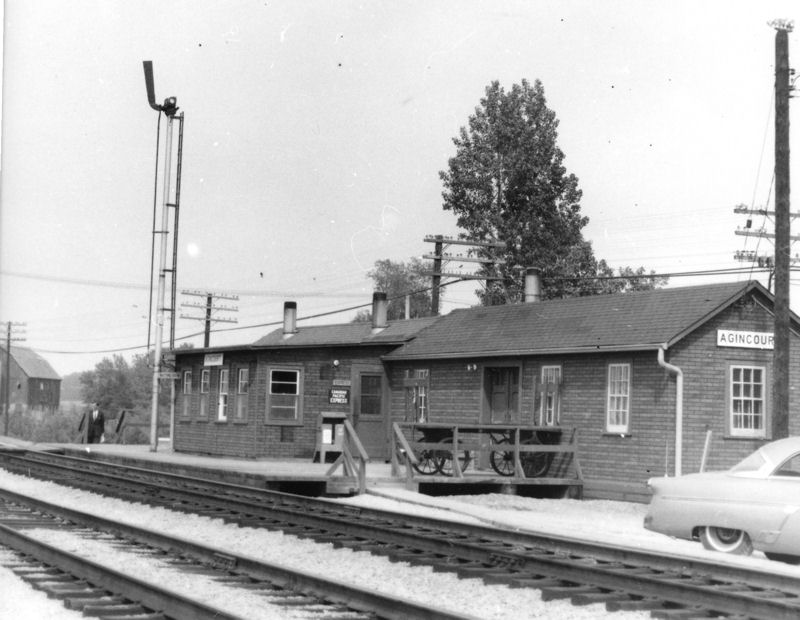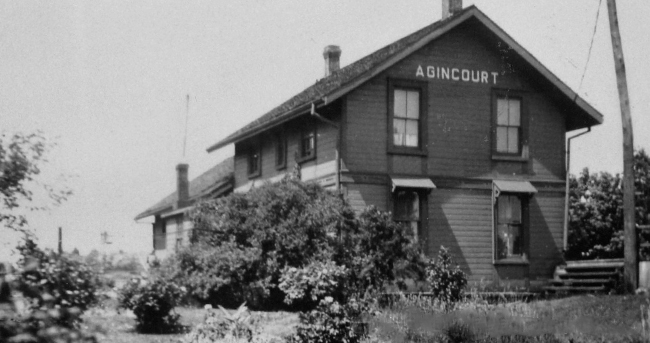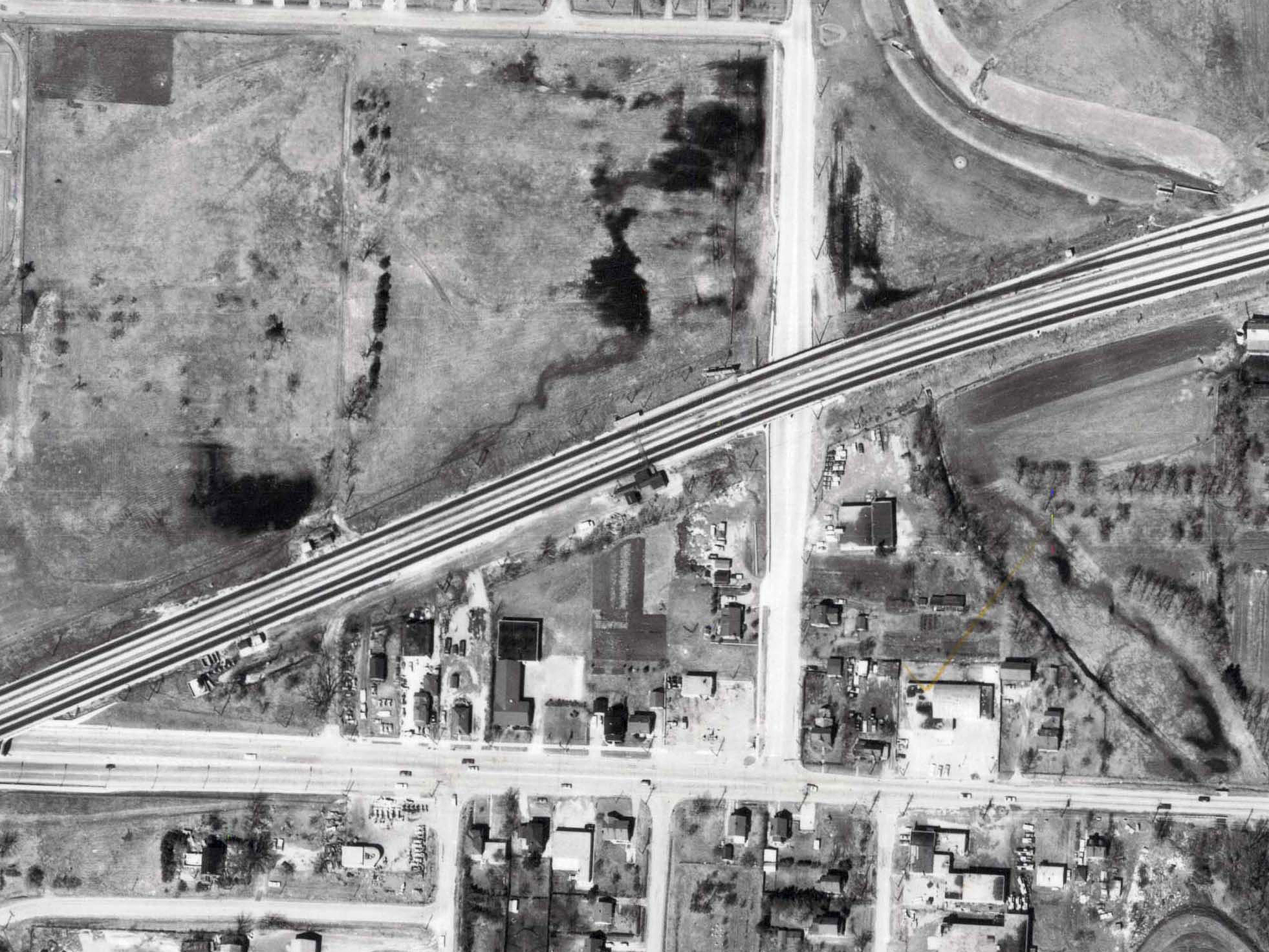Summary
Agincourt Station was built in 1884 by the Ontario & Quebec Railway while its construction was progressing west through what was then the northern reaches of Toronto. It was the second railway station to be built in Agincourt, after the Toronto & Nipissing Railway built their own station thirteen years earlier. The Ontario & Quebec existed solely on paper as a proxy of the Canadian Pacific Railway, to whom it was leased for 999 years. The station utilized the standard “Van Horne” design, which was named after William Cornelius Van Horne and was commonly built in rural areas across the Canadian Pacific system. They were rectangular wooden structures with a second floor at one end containing the station agent’s living quarters. Below that was the waiting room and station agent’s office, with a long freight room extending outwards to one side. The first train arrived in Agincourt on June 28th, 1884 with twice daily service as far east as Peterborough. Service was extended beyond Peterborough to Montreal on August 4th of the same year.
Rail traffic quickly grew and plans to increase capacity were soon drawn up just before the turn of the 20th century. Plans initially called for double tracking the entire line from Montreal to Windsor, a plan which was fulfilled in part but with a significant deviation east of Toronto. Between 1912 and 1914, a new line was built on a separate right-of-way south of the existing Ontario & Quebec line. It accessed the more populated communities closer to the shore of Lake Ontario than its counterpart, and did so at a much easier grade. It joined with the Ontario & Quebec line one kilometer east of Agincourt Station at its western end, and Glen Tay at its eastern end. The line west of Agincourt was double tracked in 1914, and at its peak in 1921 the station saw a total of 17 departures per day. Service remained relatively unscathed through the Great Depression, likely due to the station’s importance at a junction between two busy lines and the growth of Agincourt into a bedroom community of Toronto.
The popularization of automobiles and air travel in the postwar era contributed to a further decline in passenger ridership, one that Agincourt Station would not fully escape from. This was only intensified by the completion of Highway 401 through Agincourt in 1956, located one kilometer south of the station and serving many of the same communities the railway did. Service to the station had been reduced to just twelve trains per day by 1961, the vast majority of which were Toronto to Havelock commuter trains made up of self-propelled Budd Rail Diesel Cars. Simultaneously, work had started on a freight marshalling yard just east of the station. Its construction involved raising the right-of-way above the surrounding roads west of the yard and widening it from two to five tracks, resulting in the station’s demolition in 1962 to make way for the new embankment. A passenger shelter was constructed in its place shortly thereafter and remained in use by commuters until it was also demolished in 1975. The station’s sign and schedule board were preserved and donated to the Toronto Railway Historical Association in 2010.
Condensed Station Info:
| Location: | Served By: | Current State: | Date Built: | Date Demolished: |
| Brimley Road and Sheppard Avenue | Canadian Pacific Railway (1884 – 1975) | Demolished (Both) | 1884 (First) 1962 (Second) | 1962 (First) 1975 |




